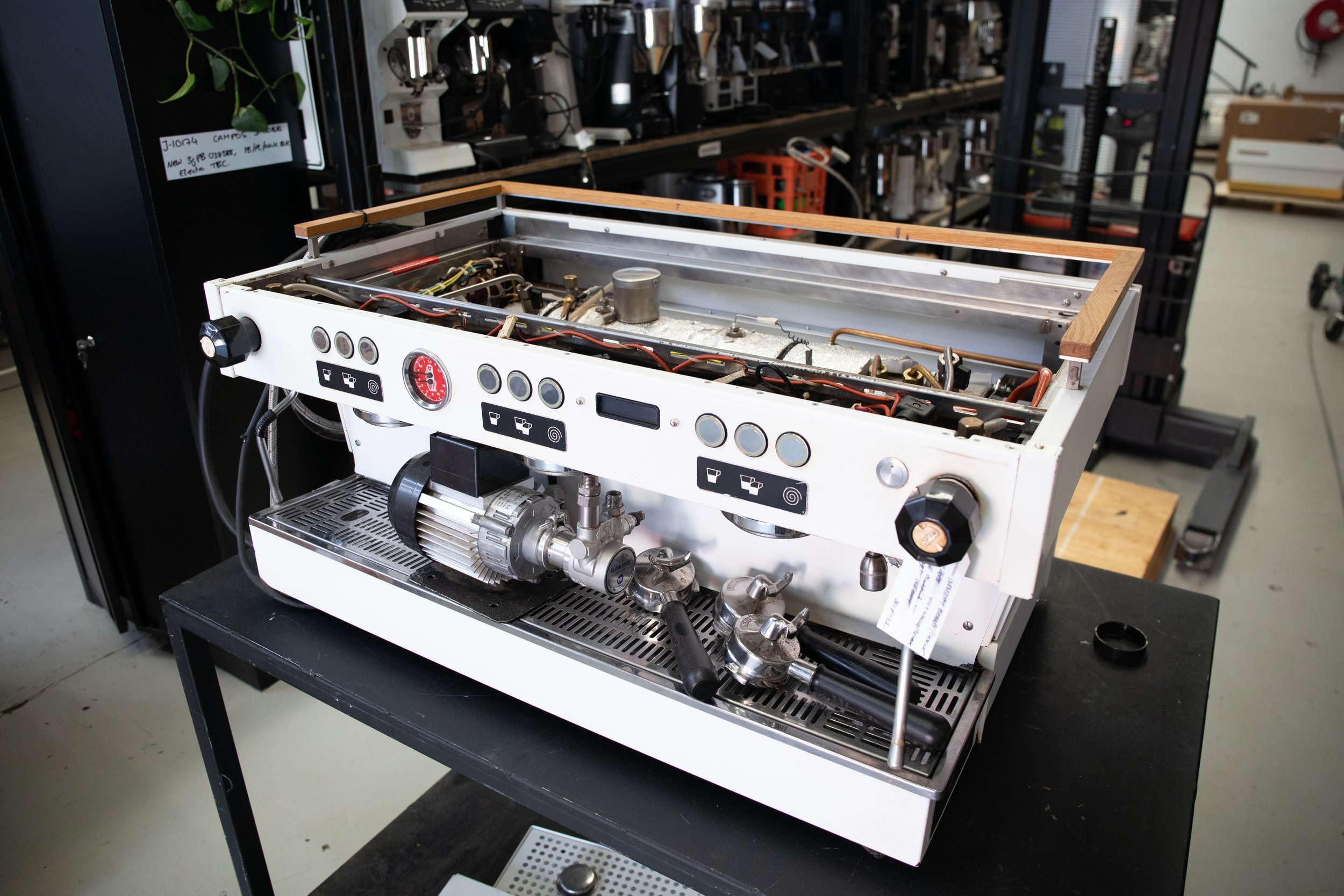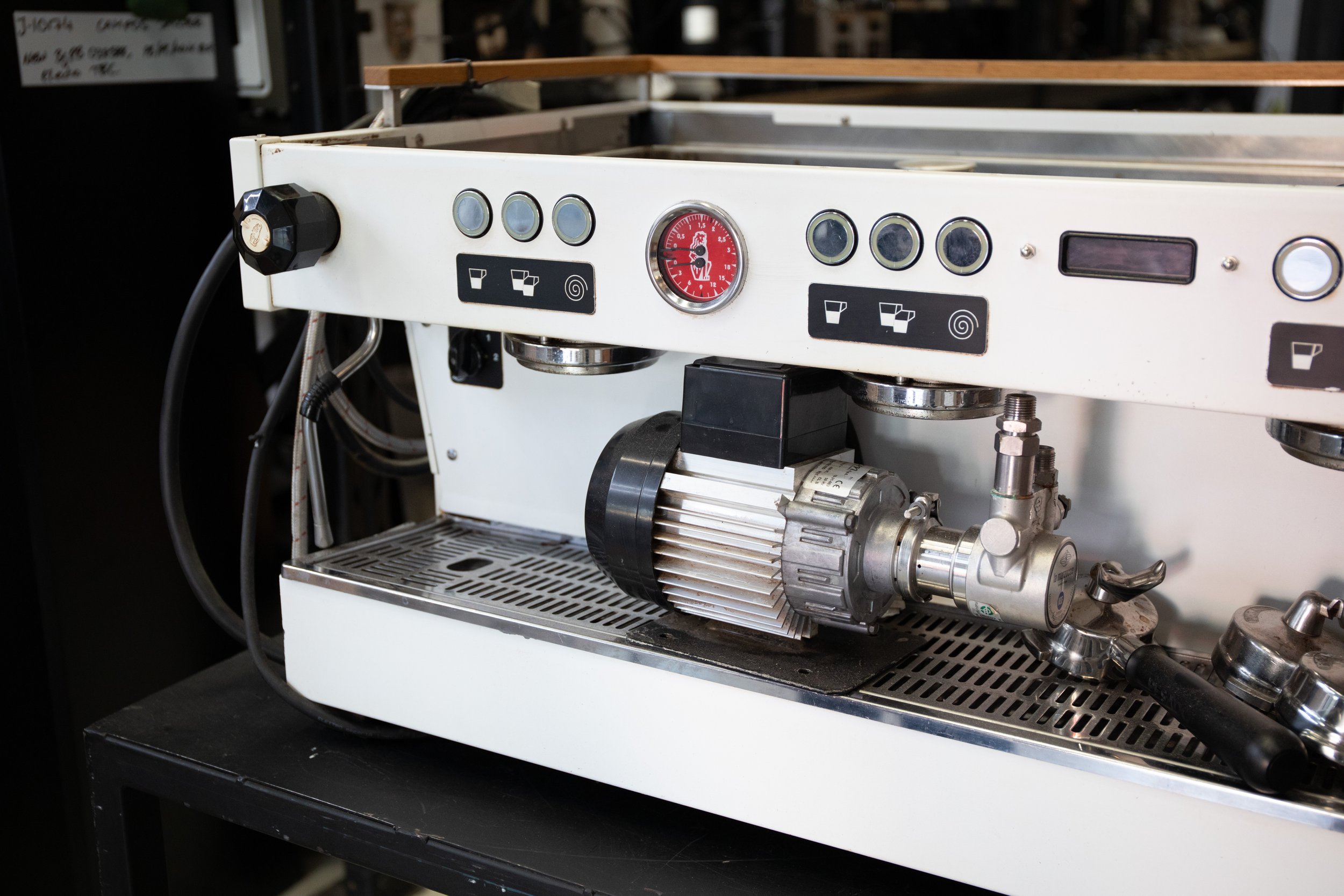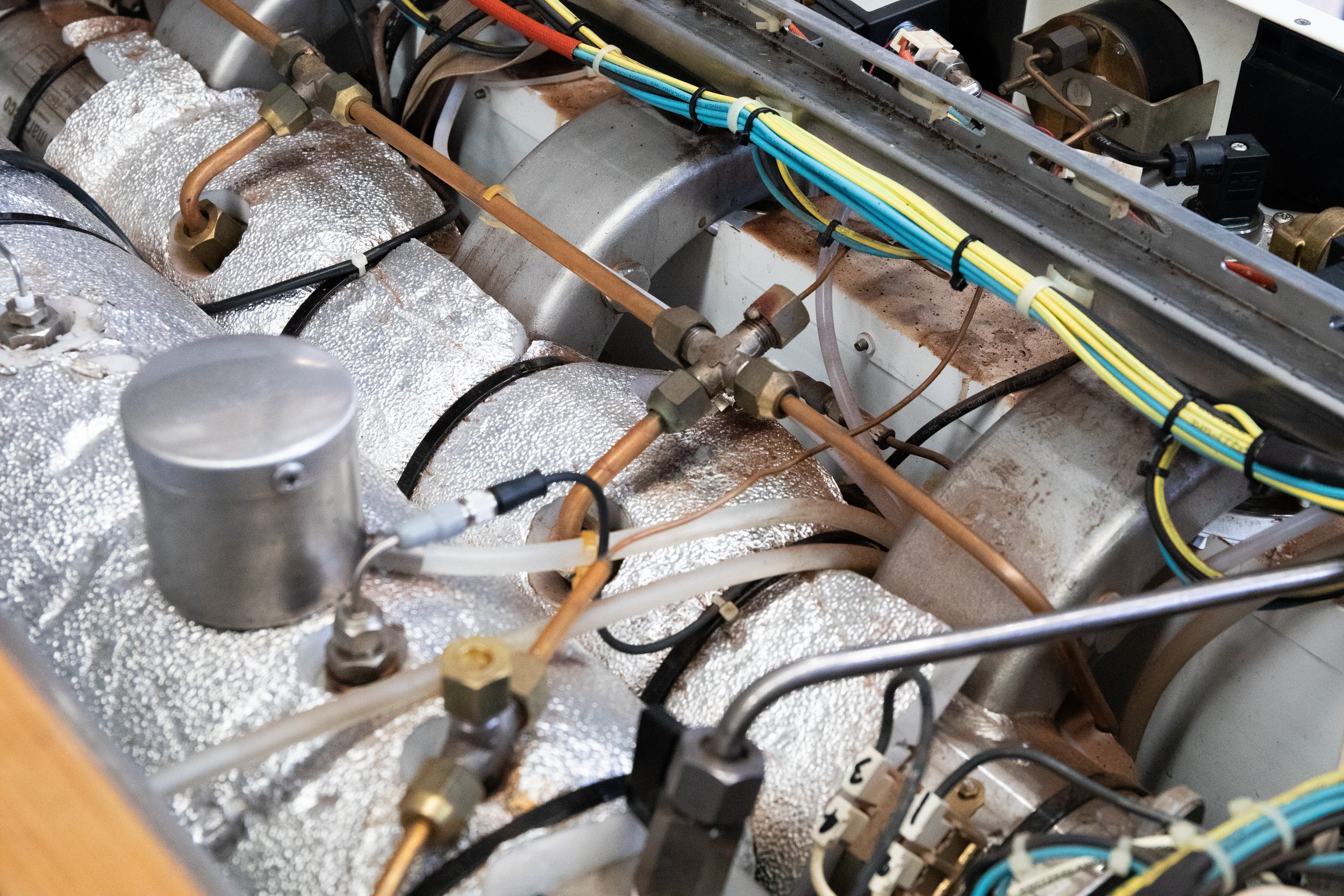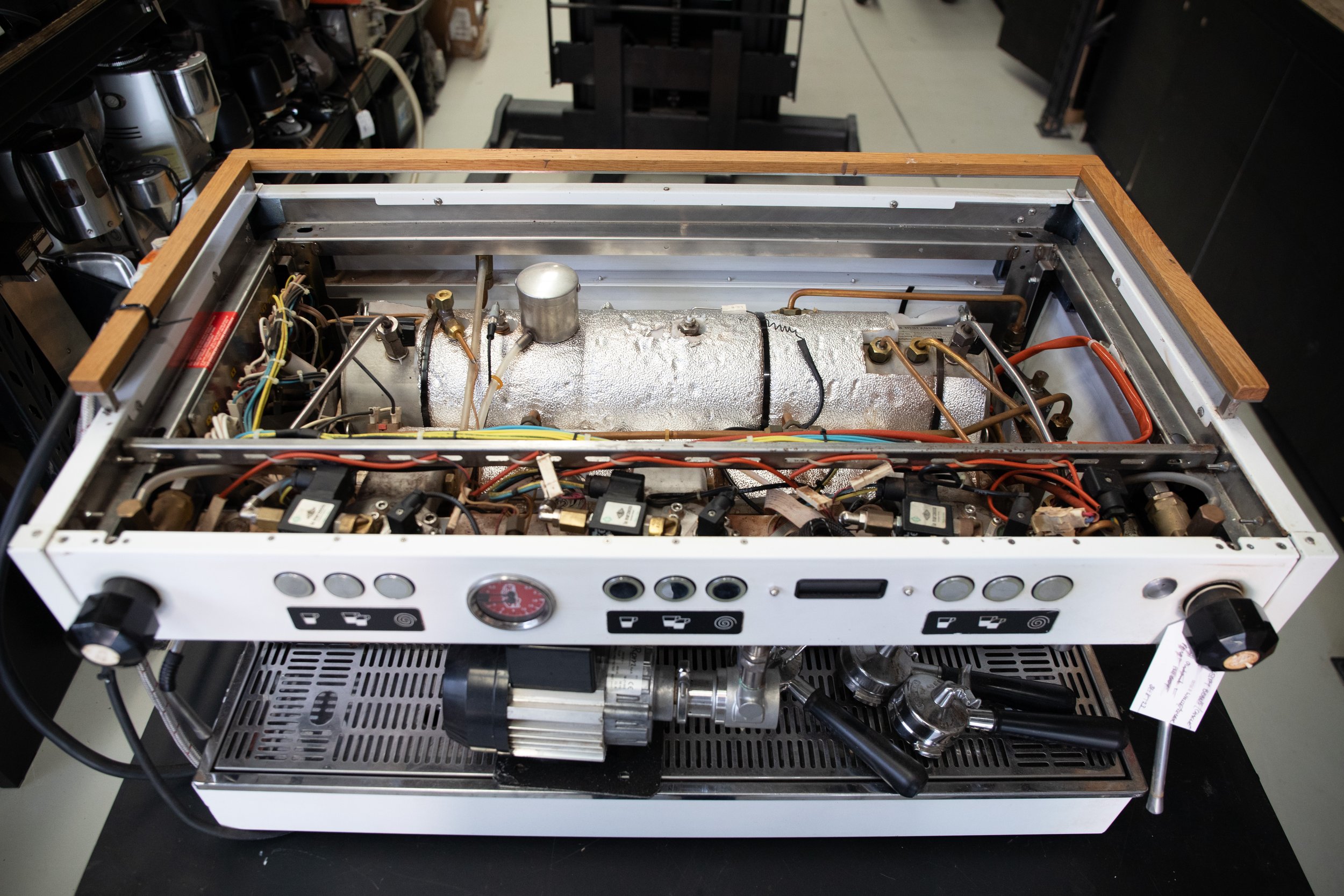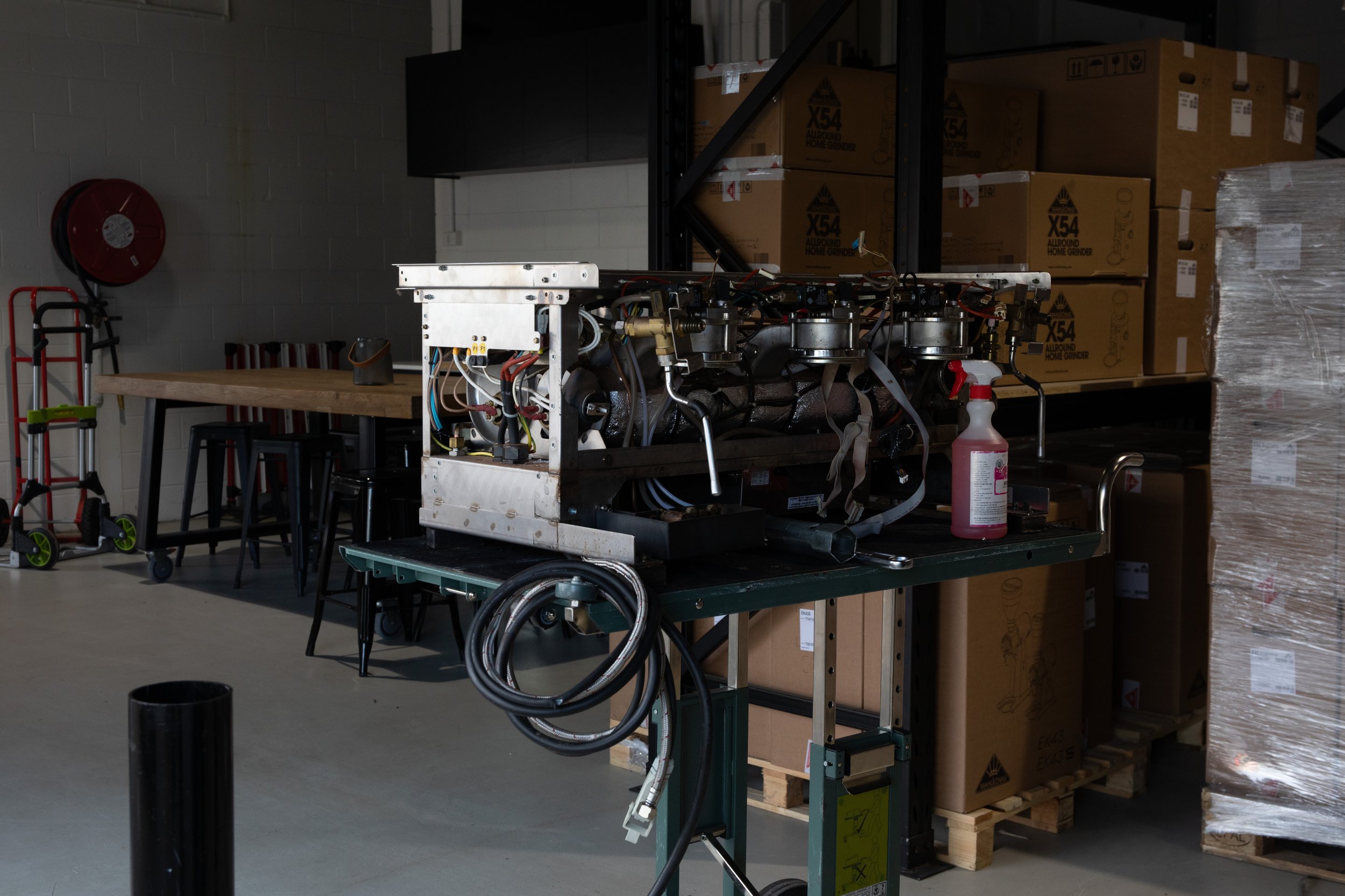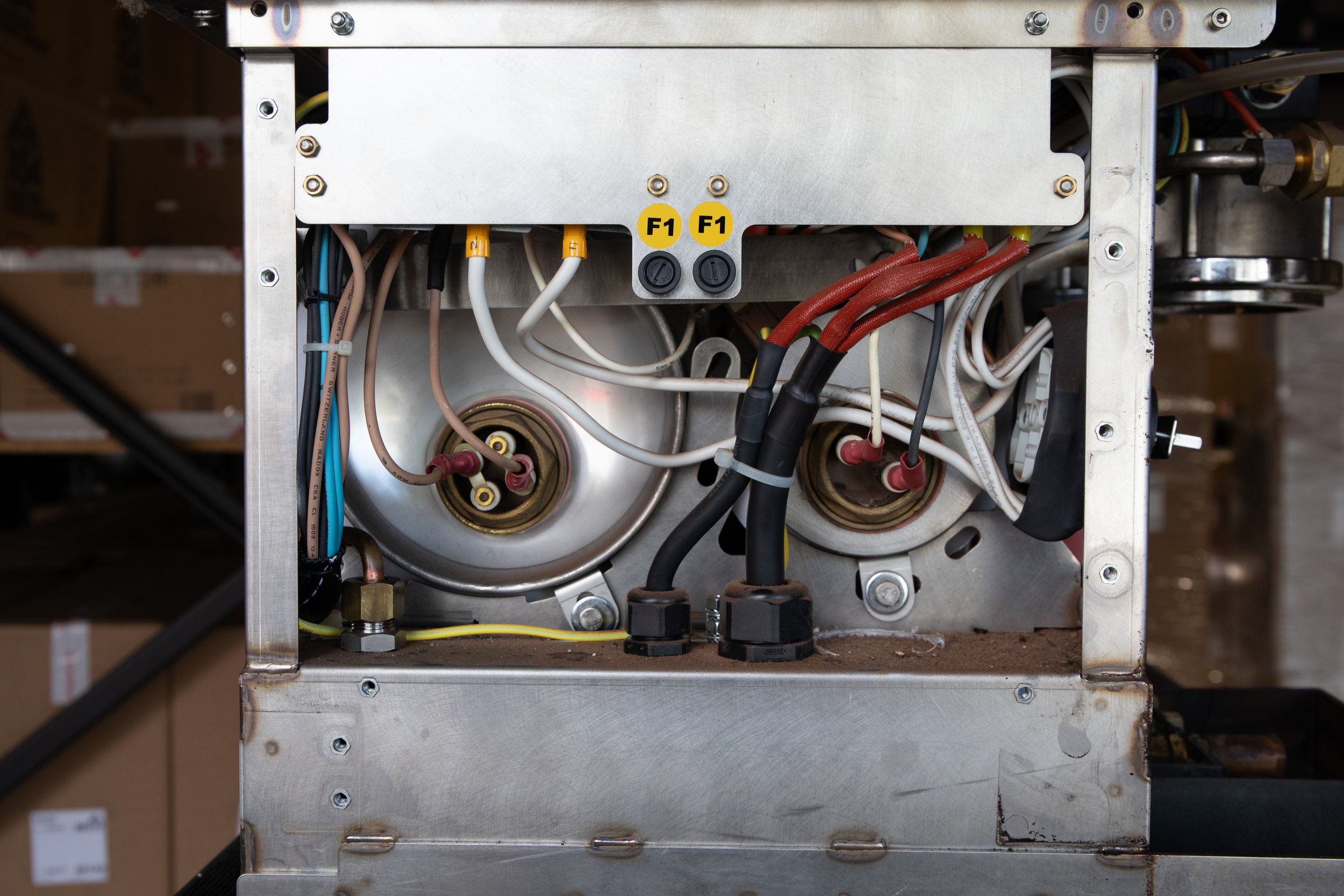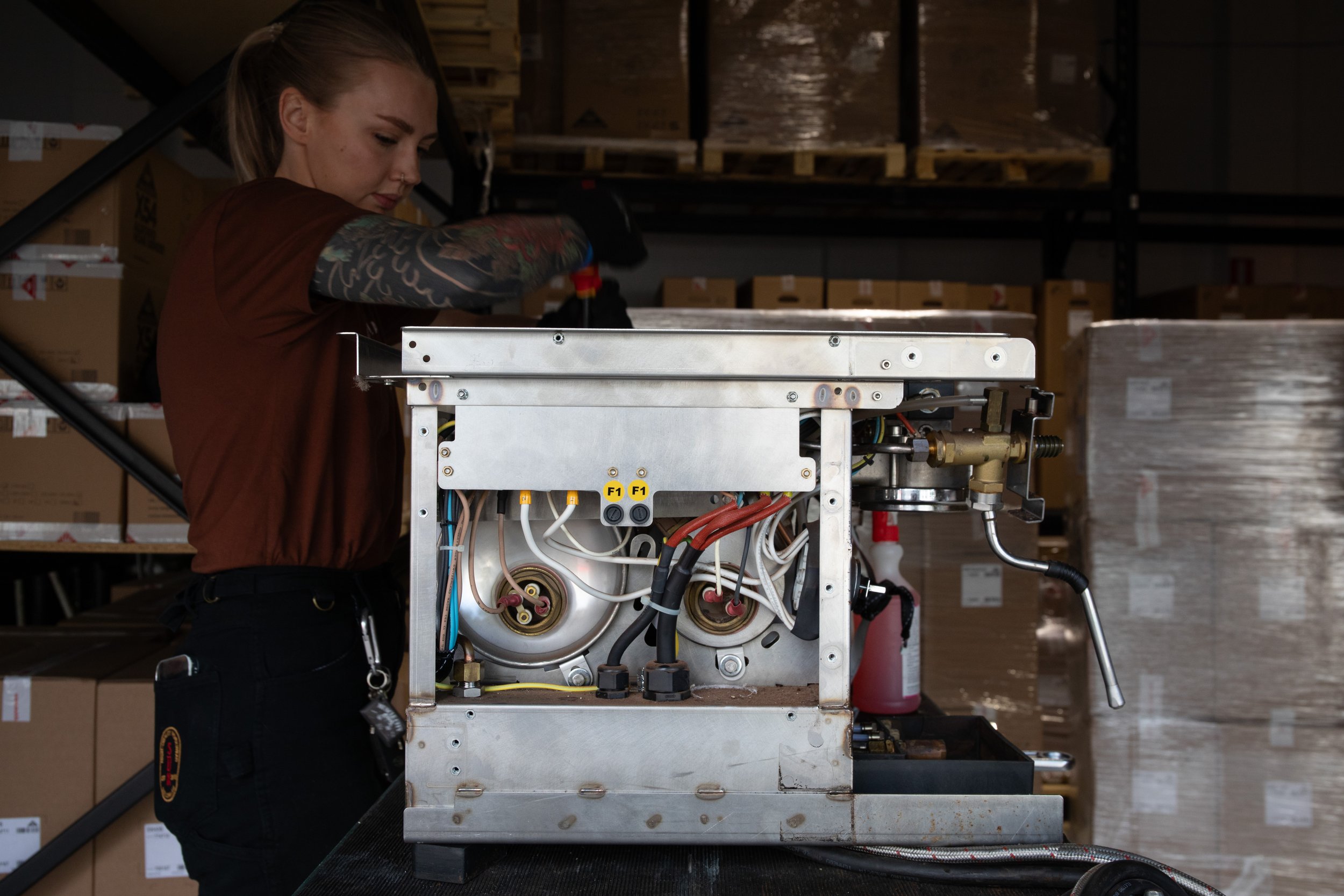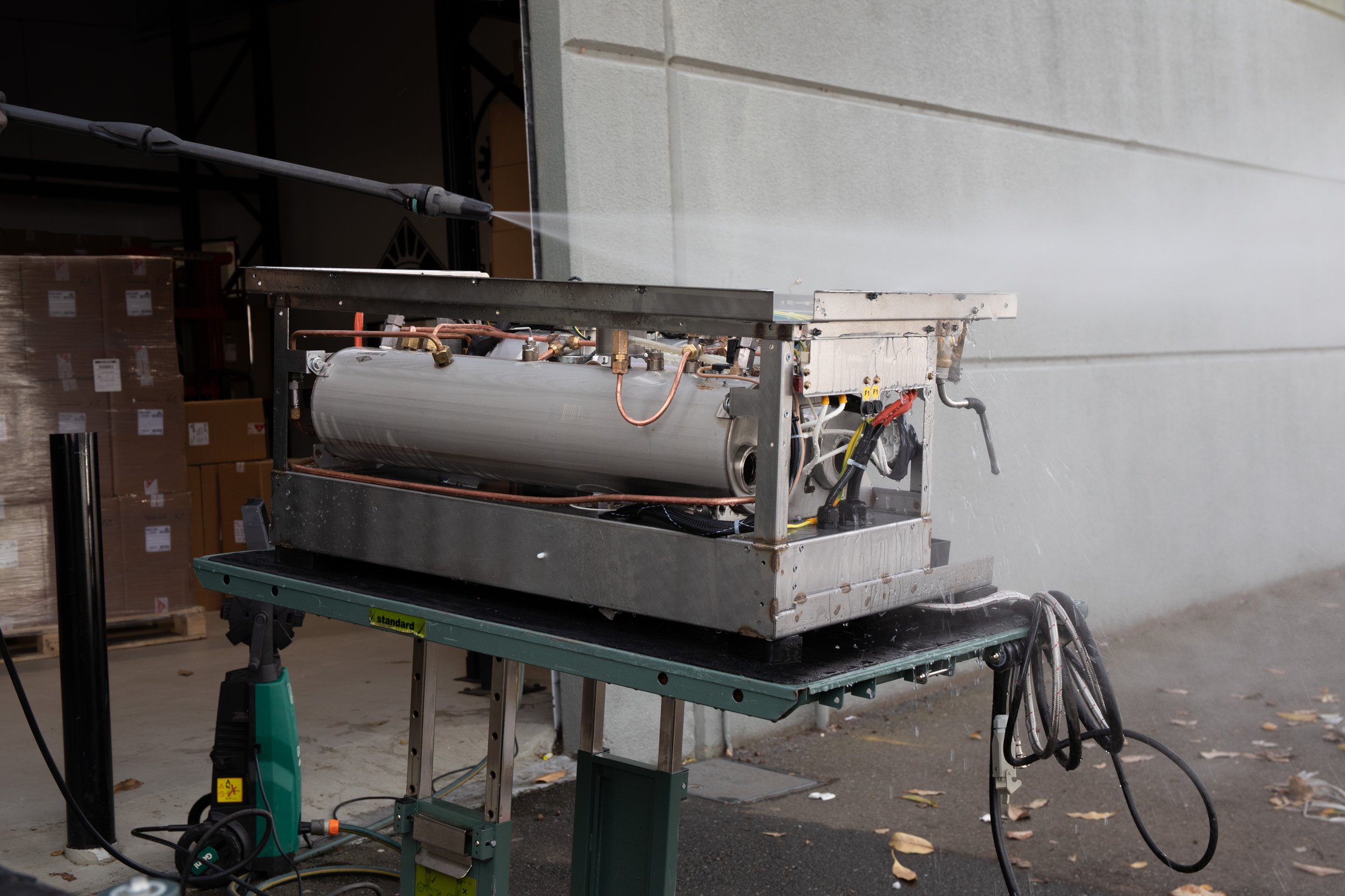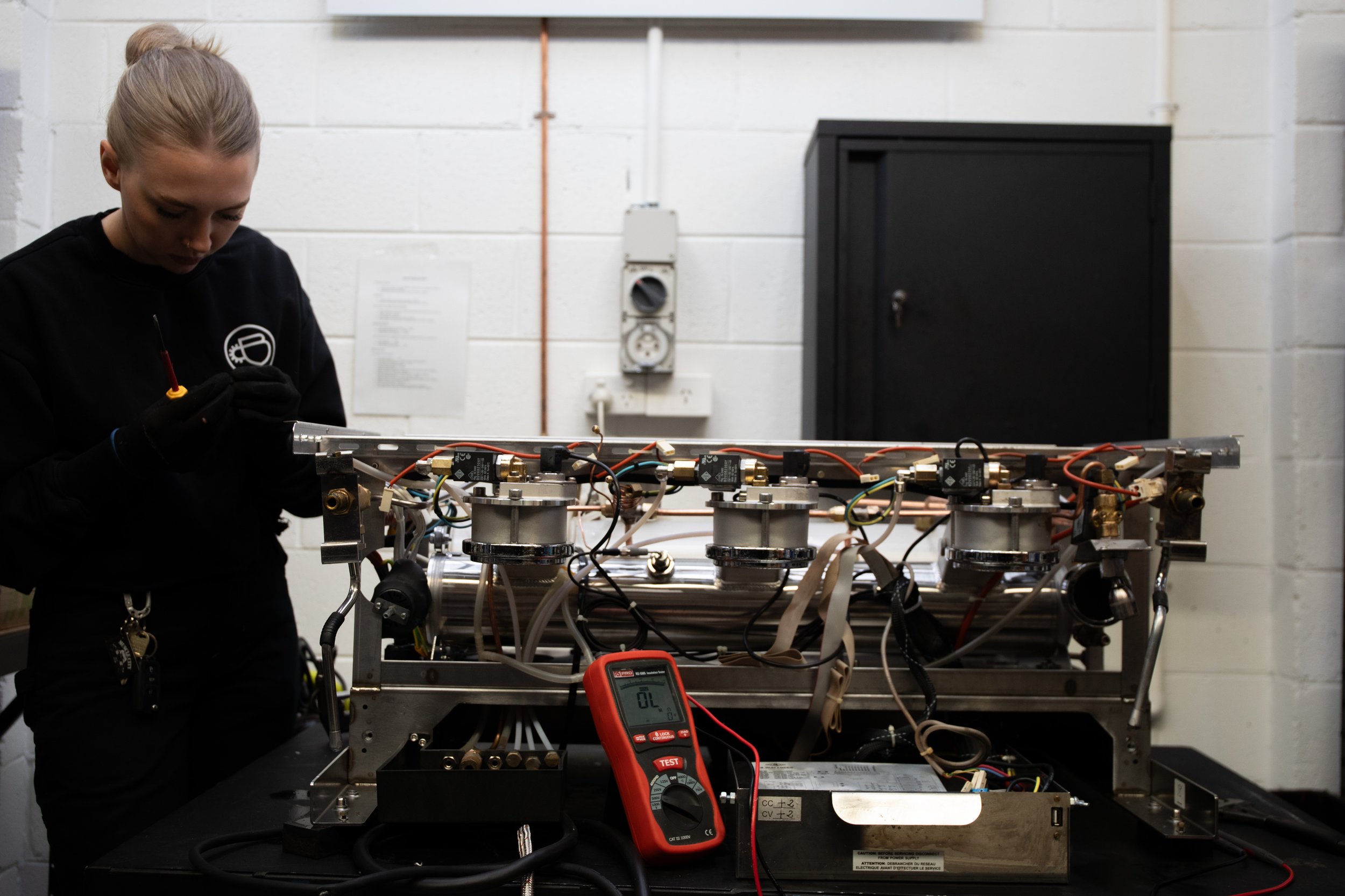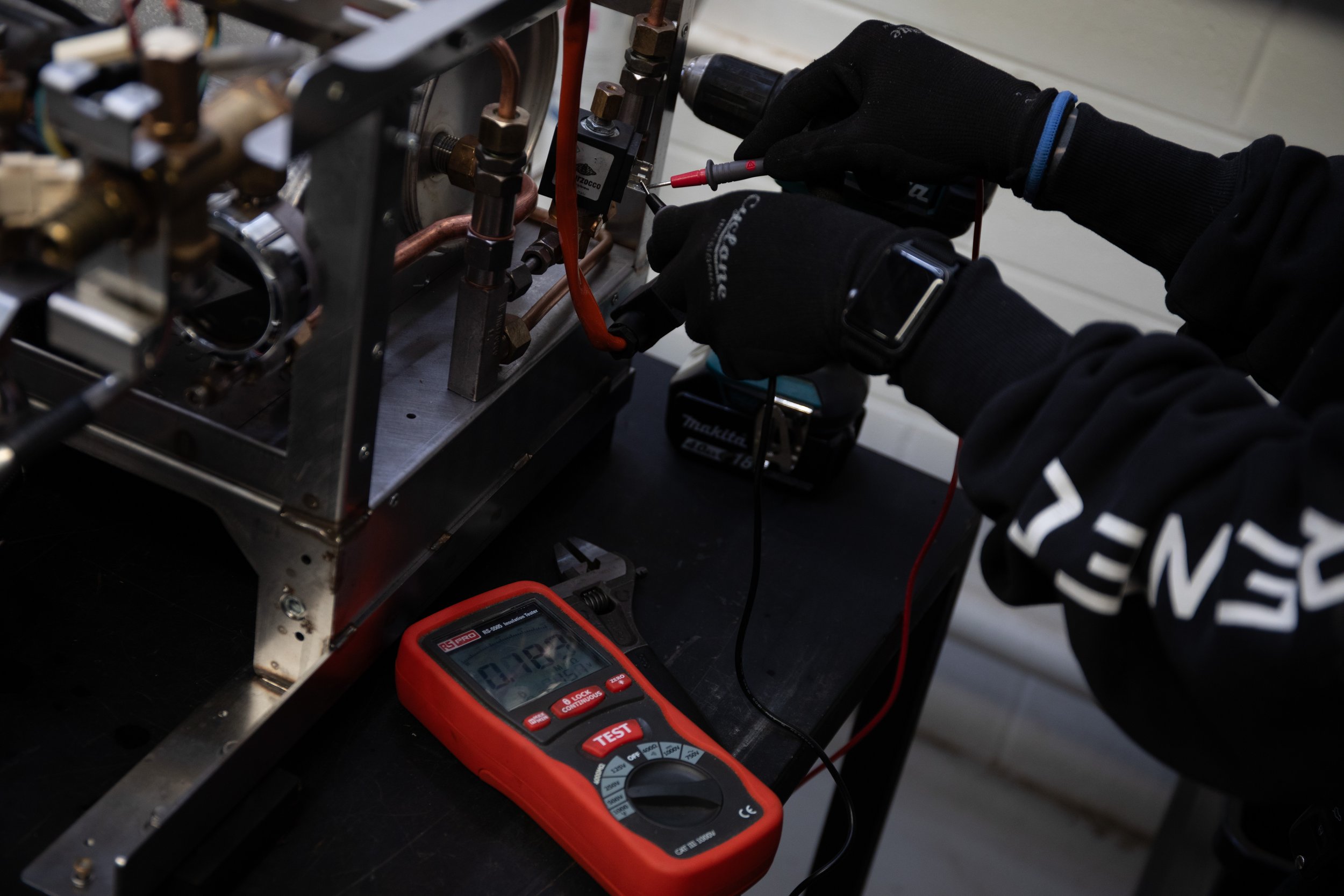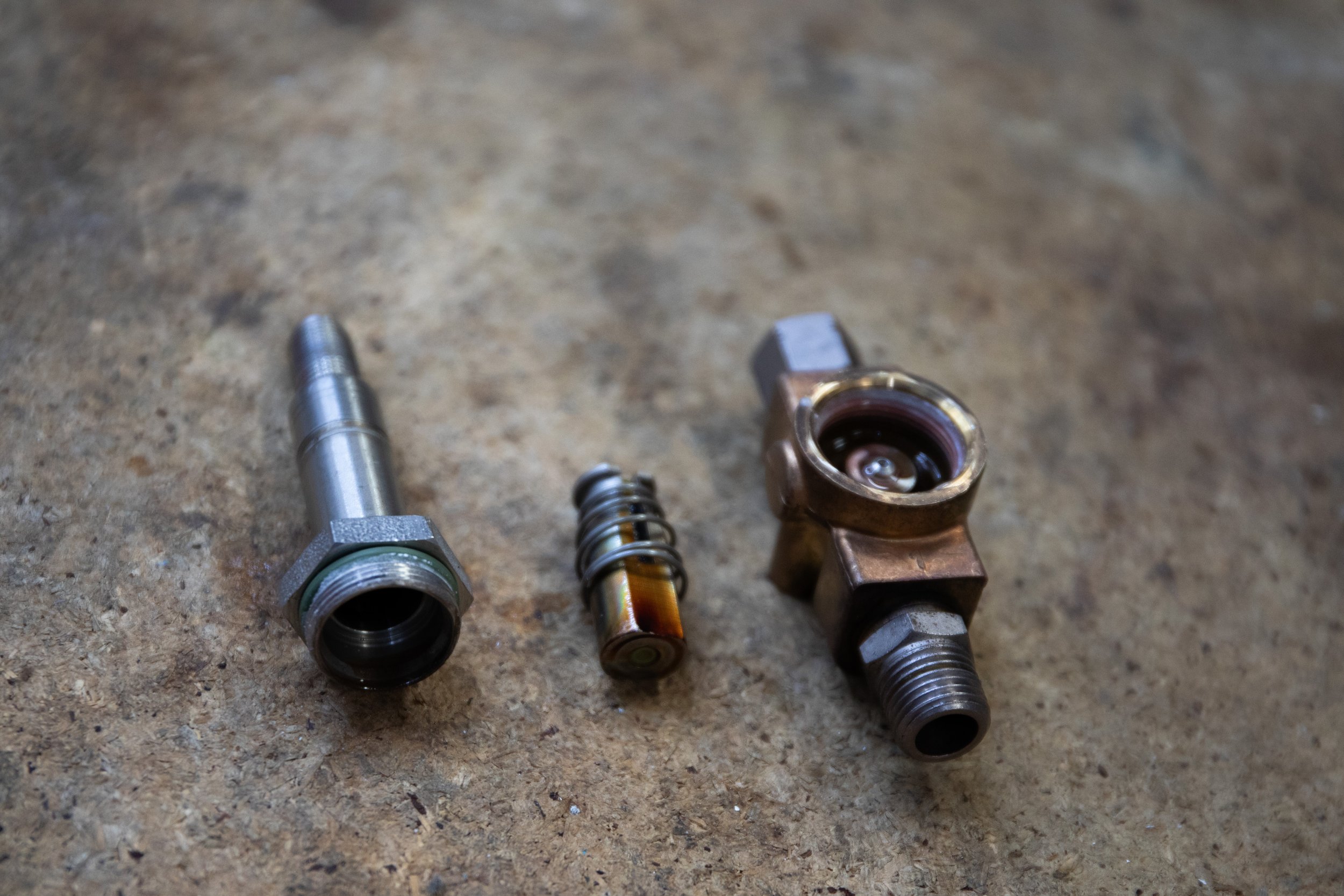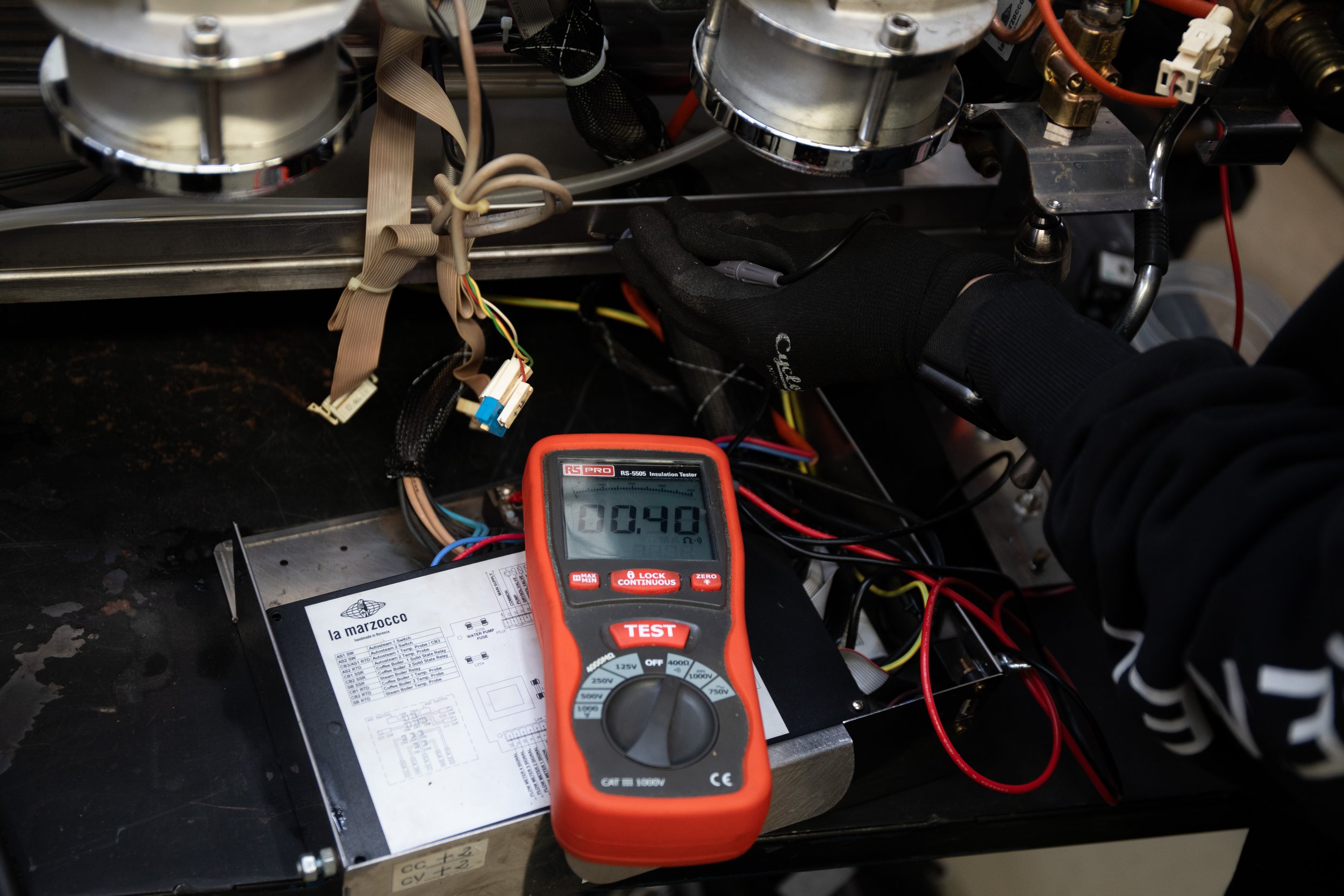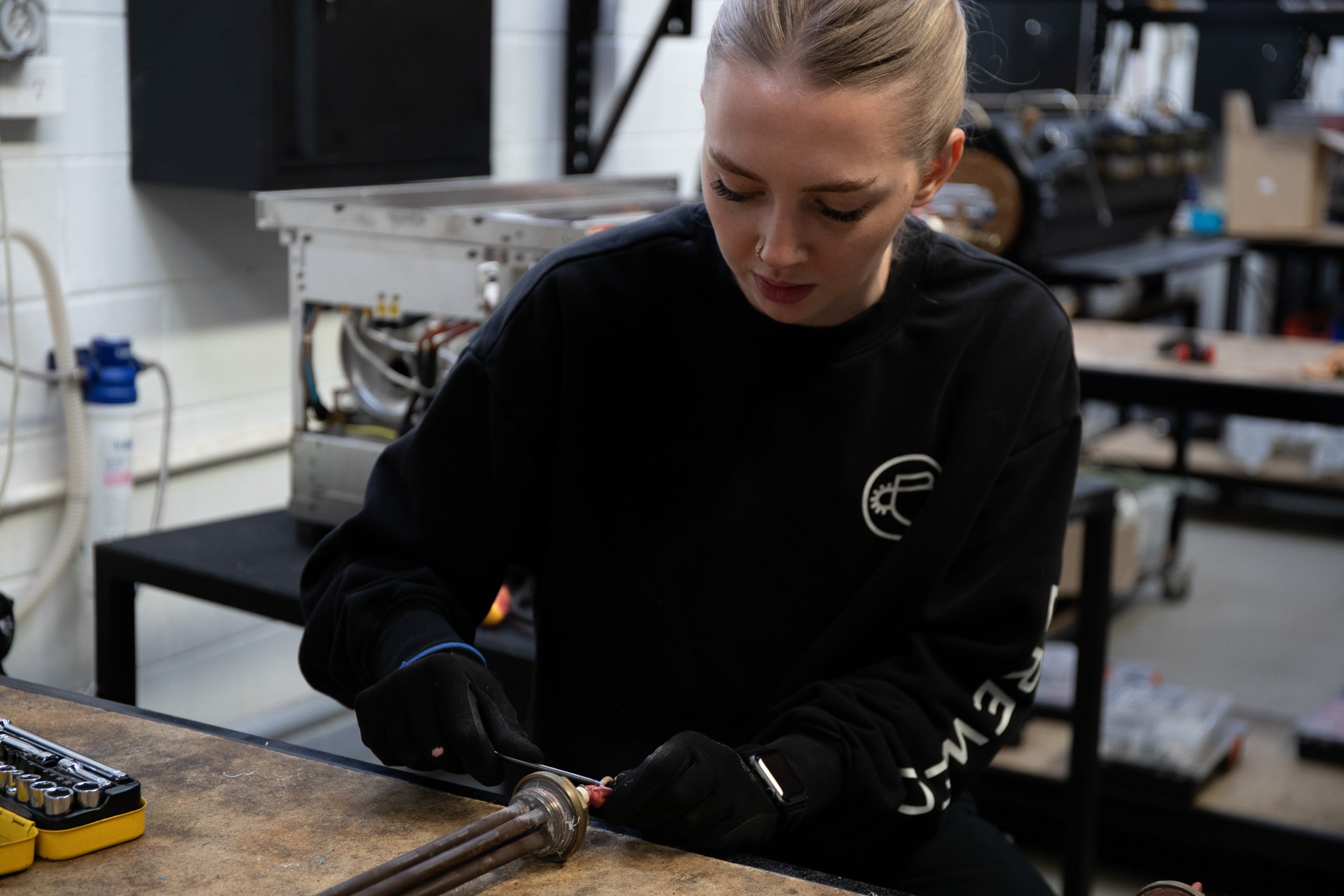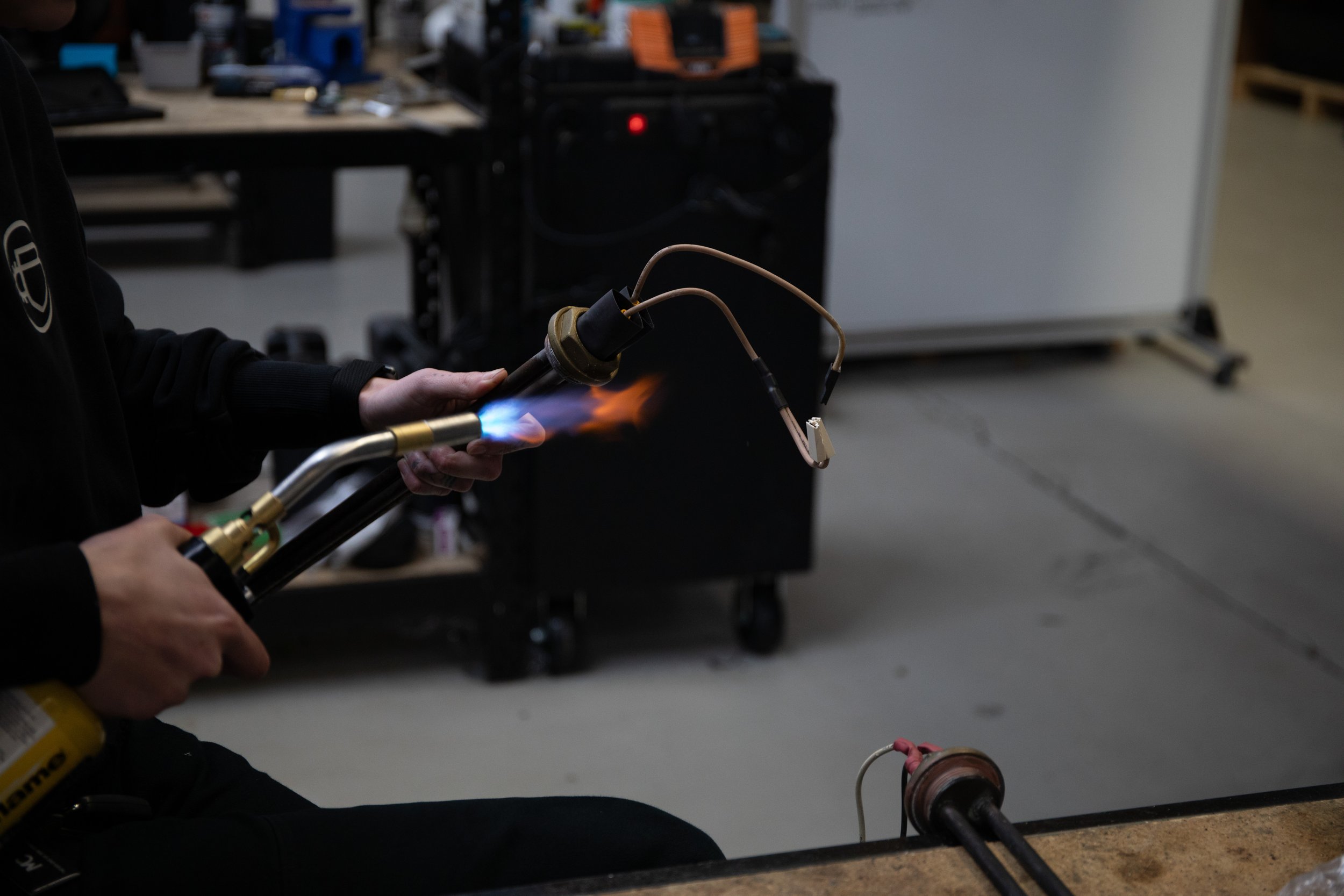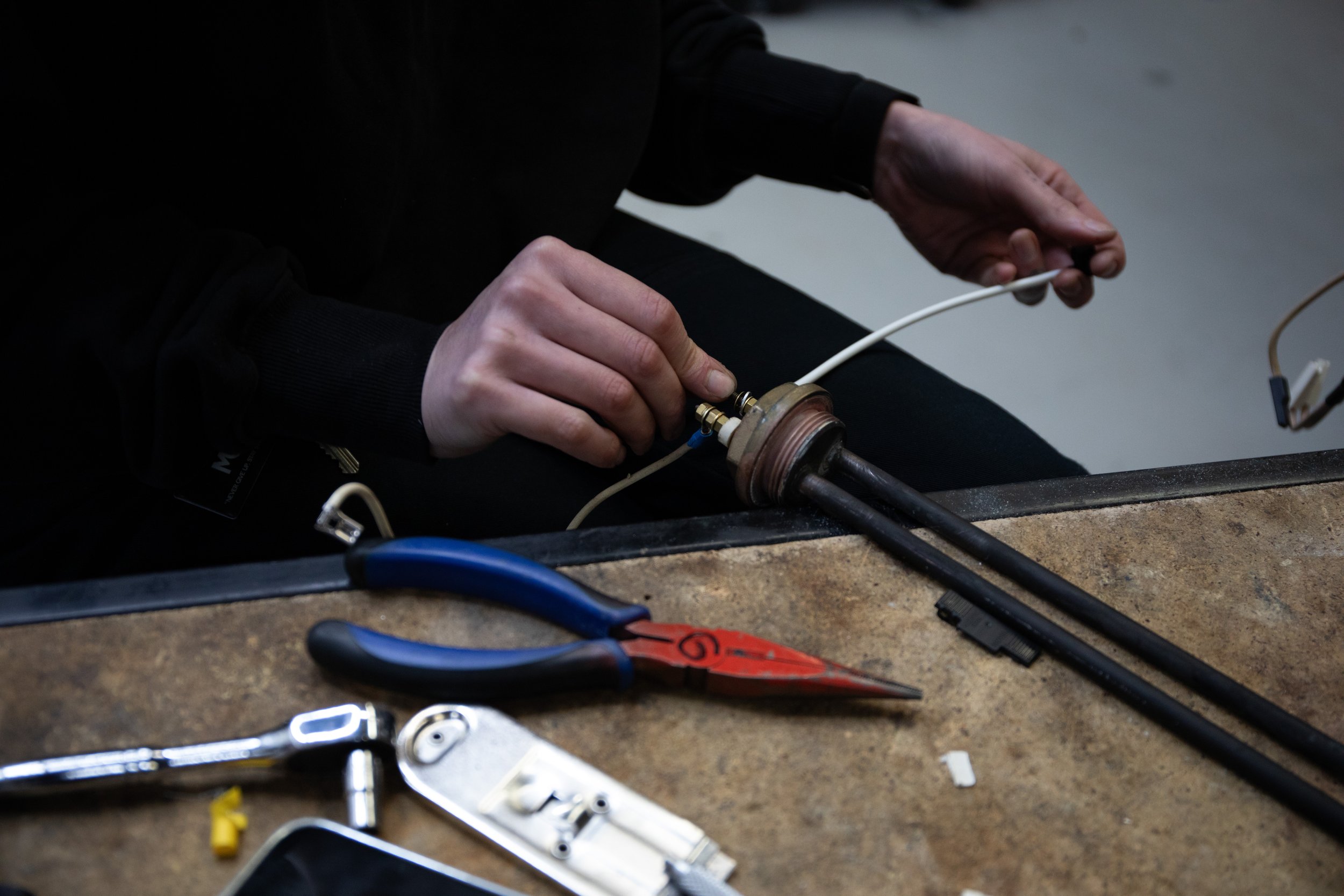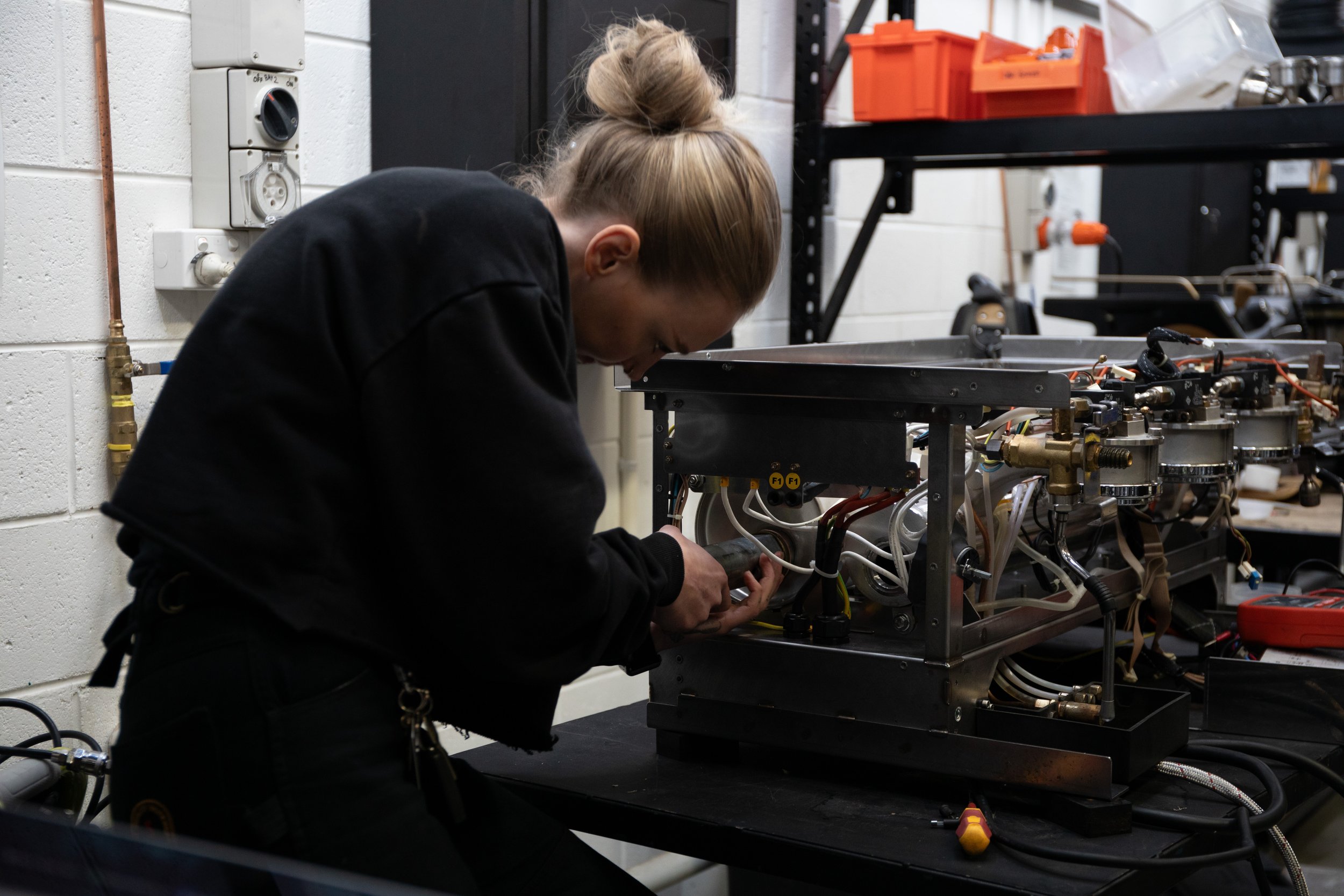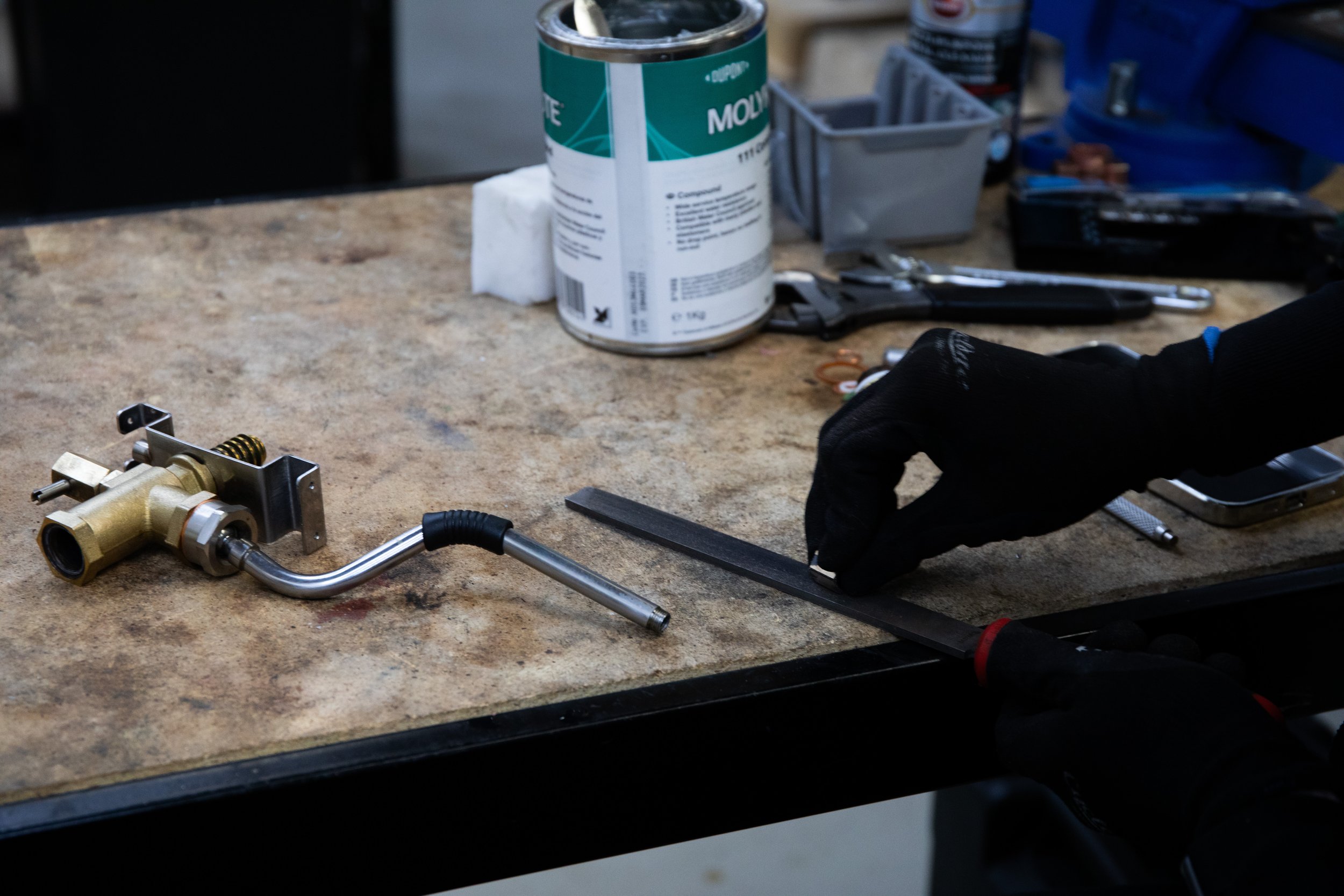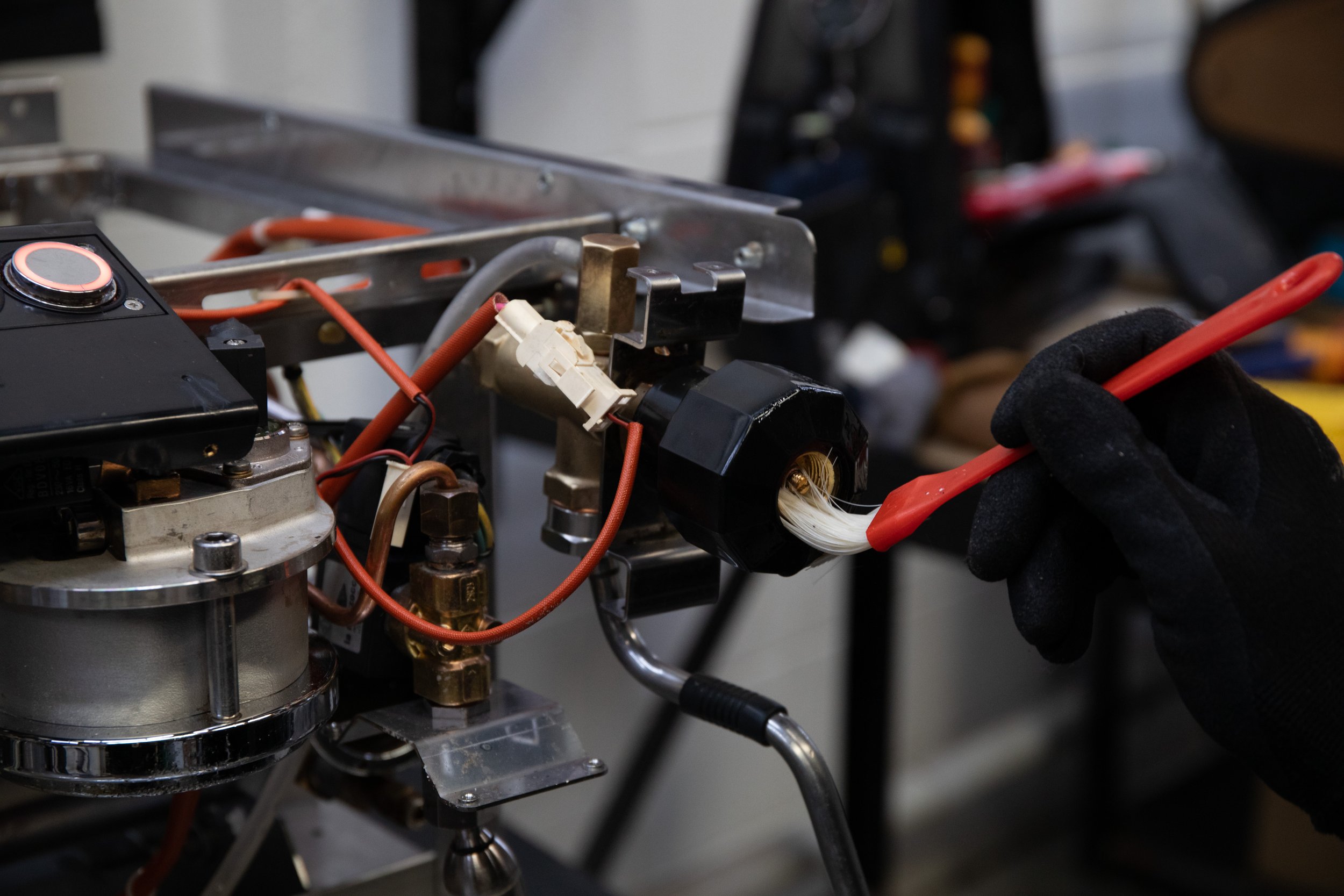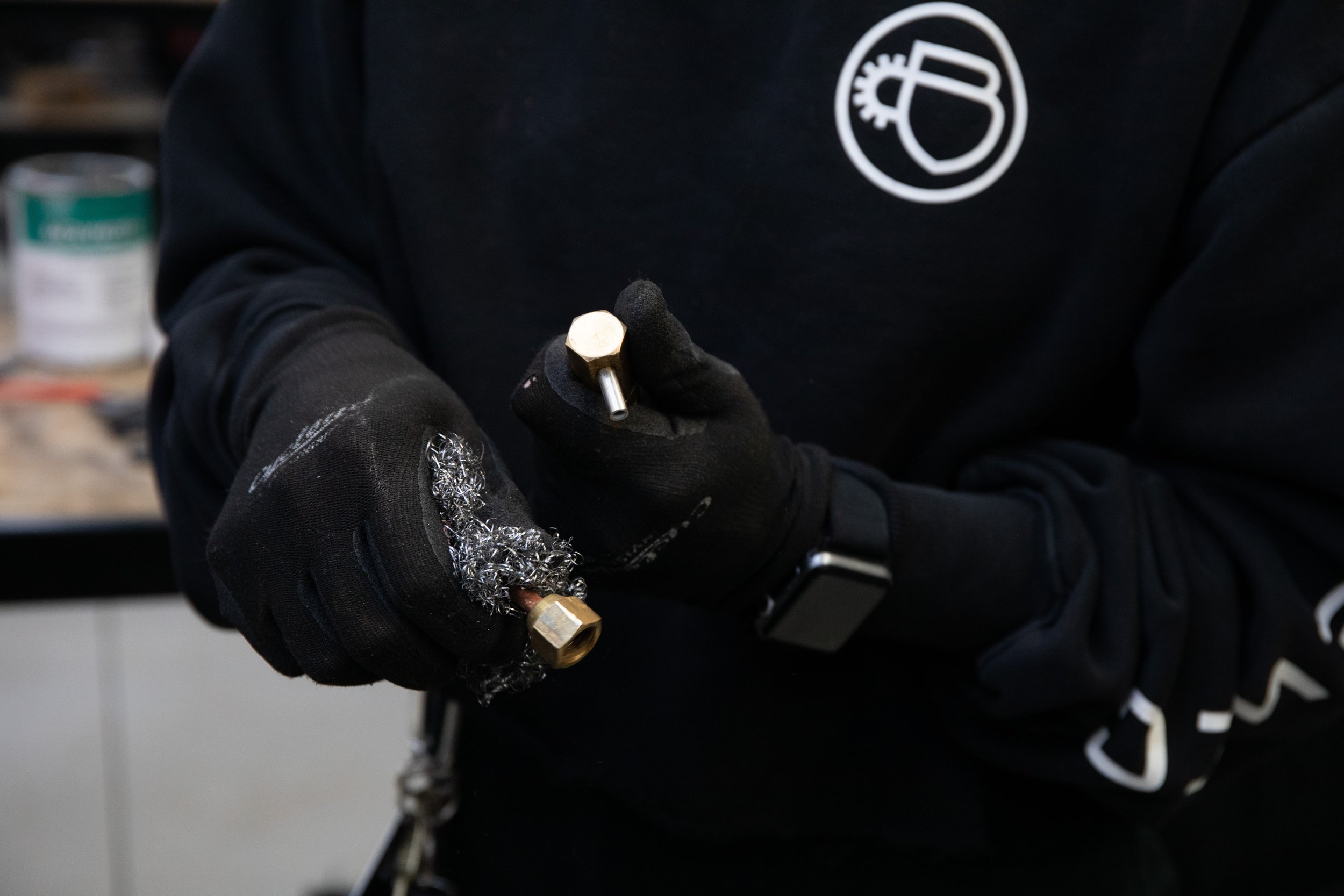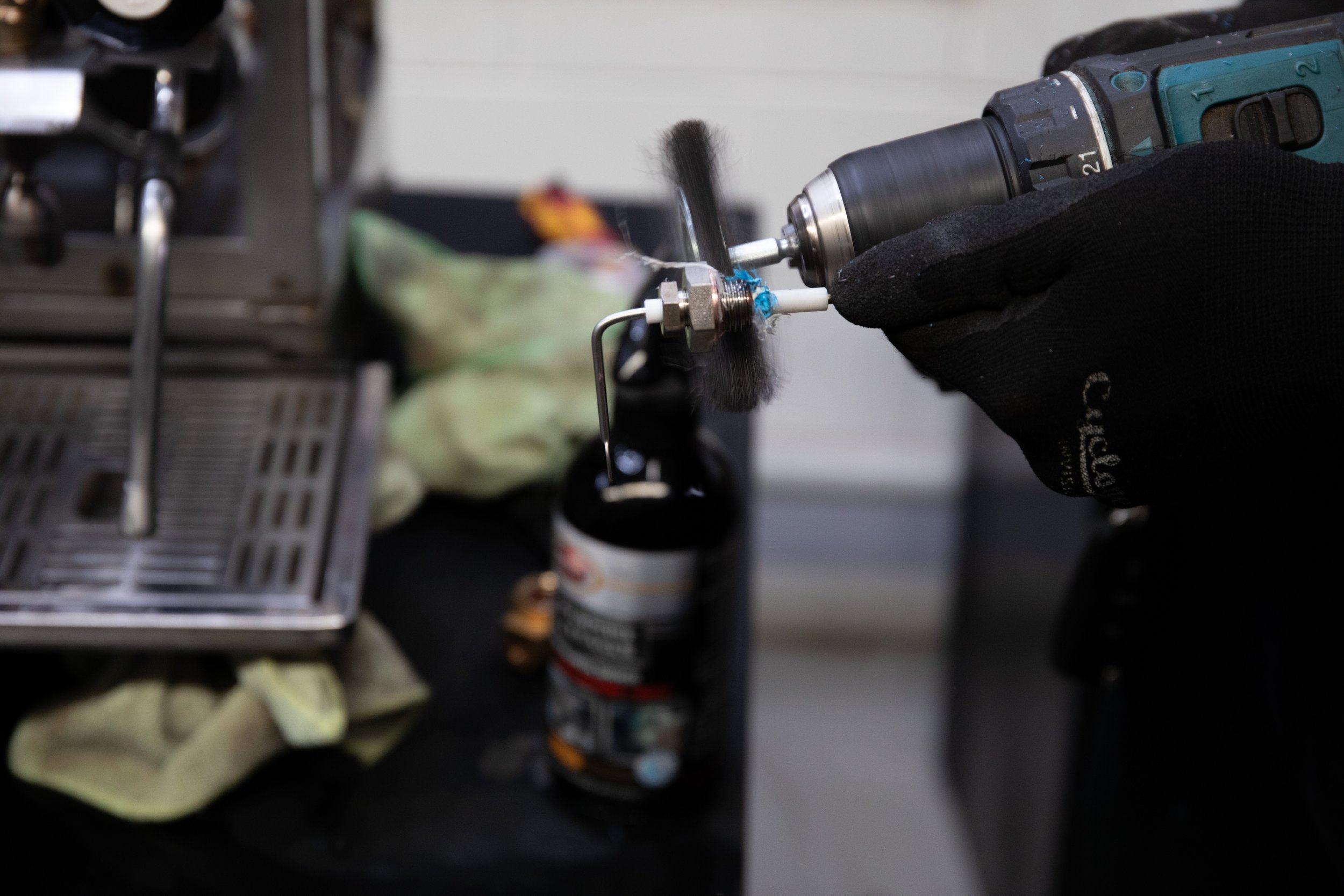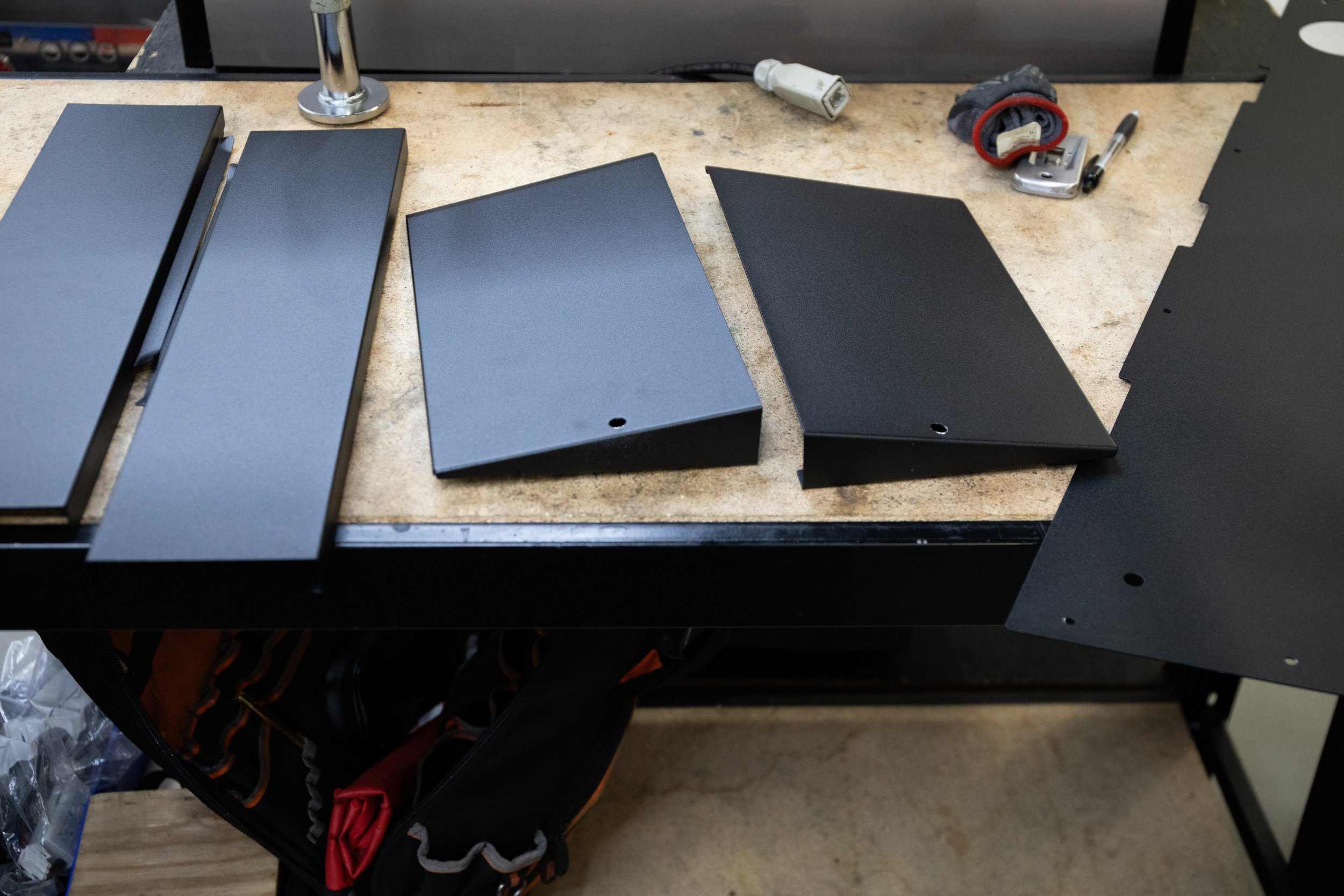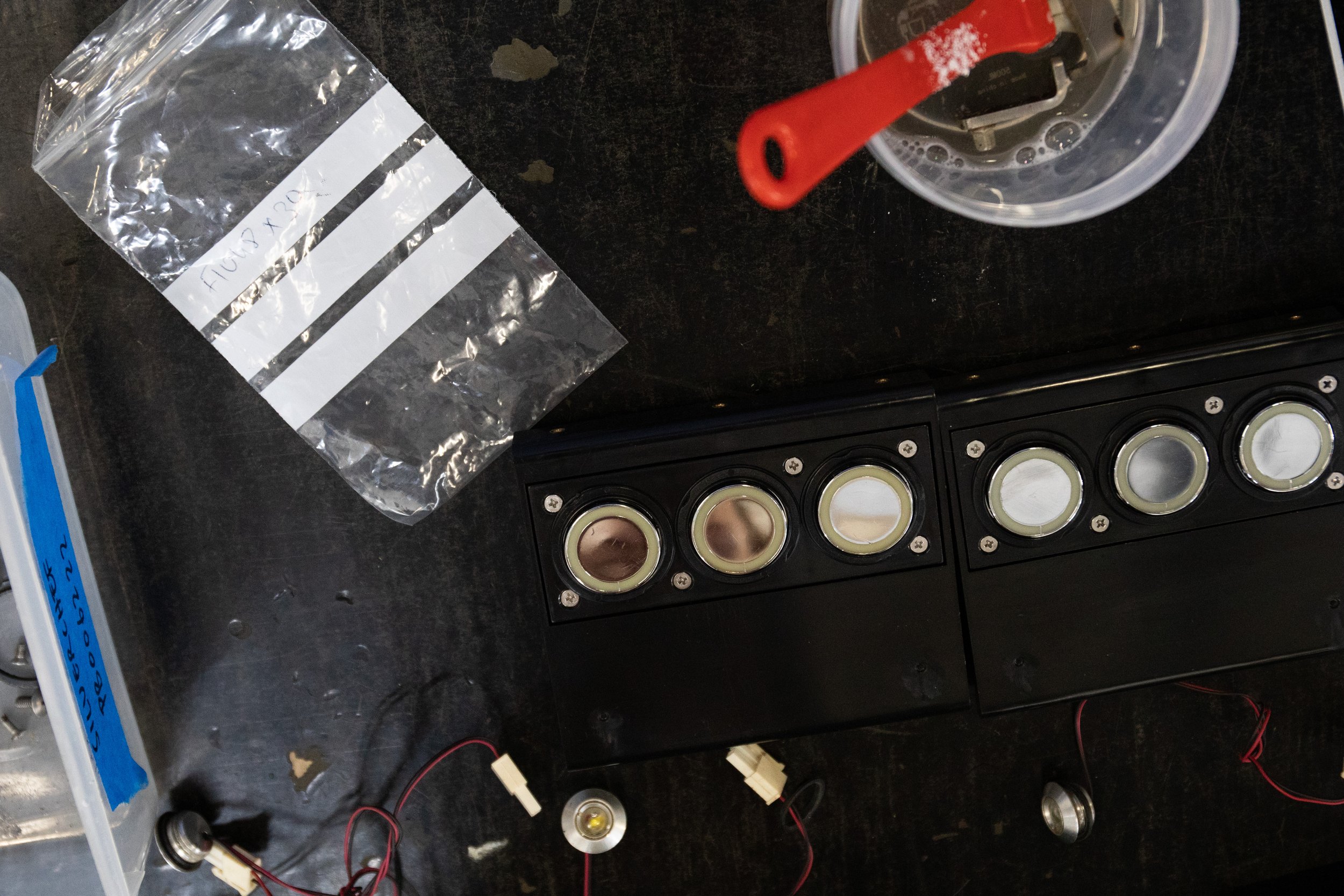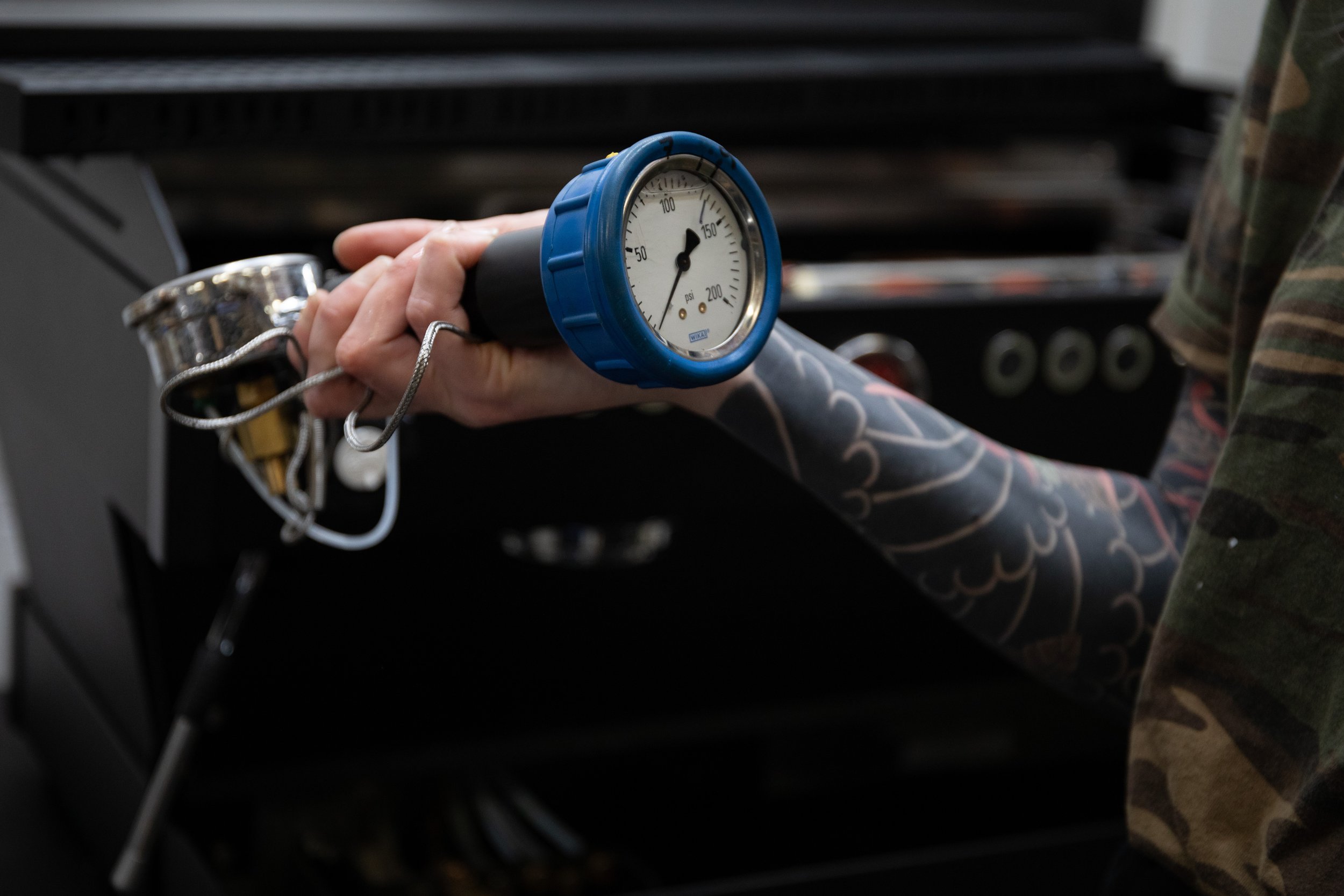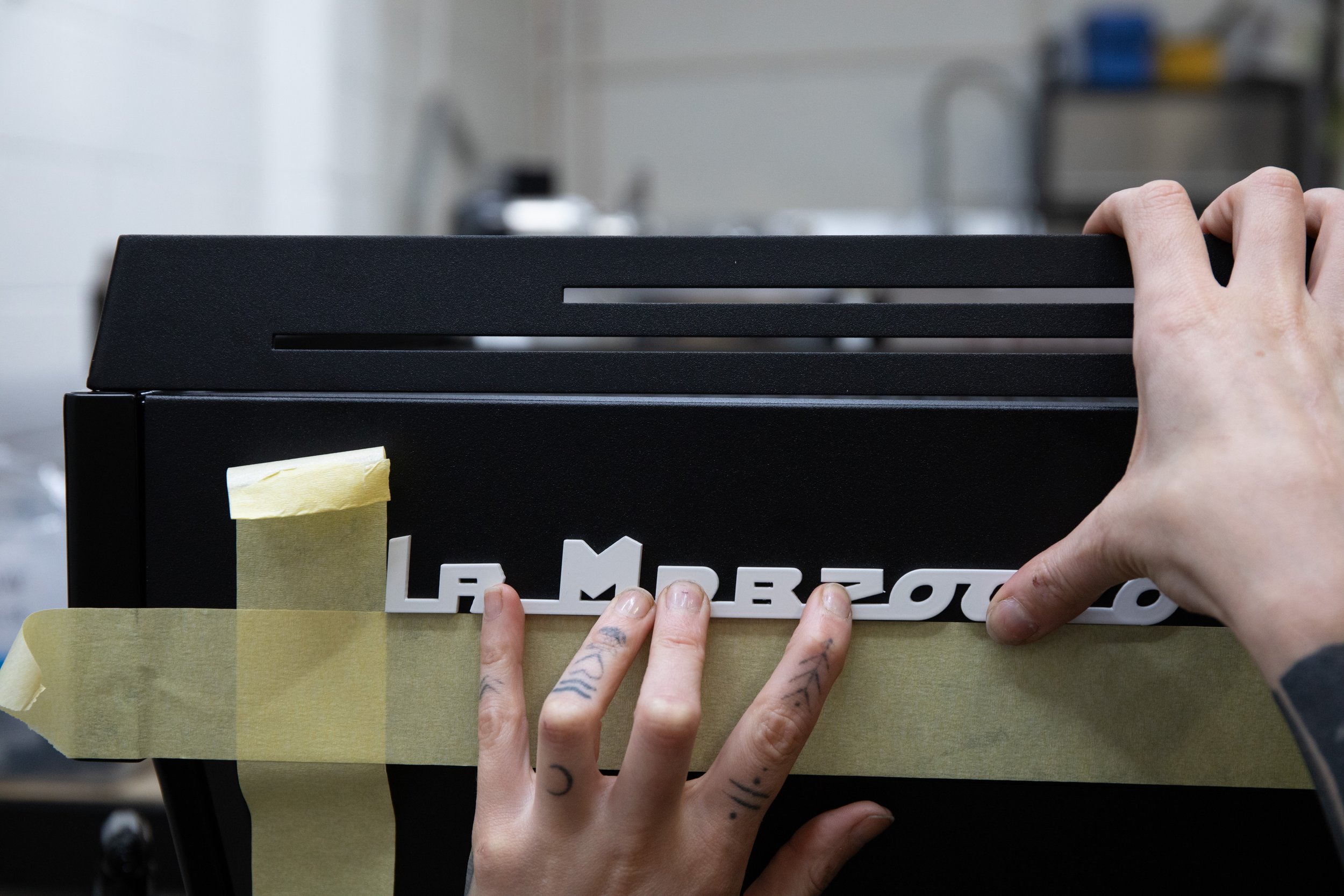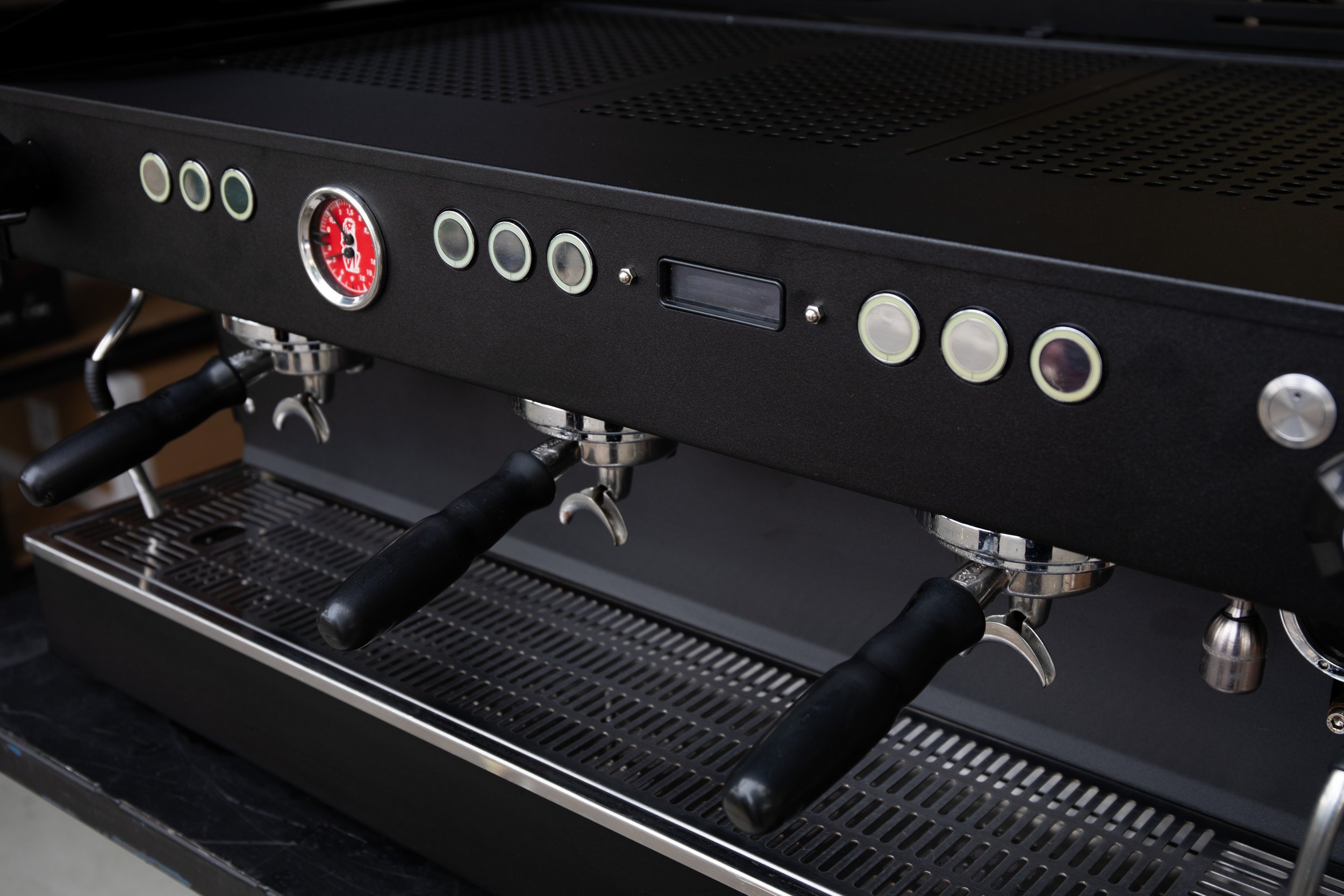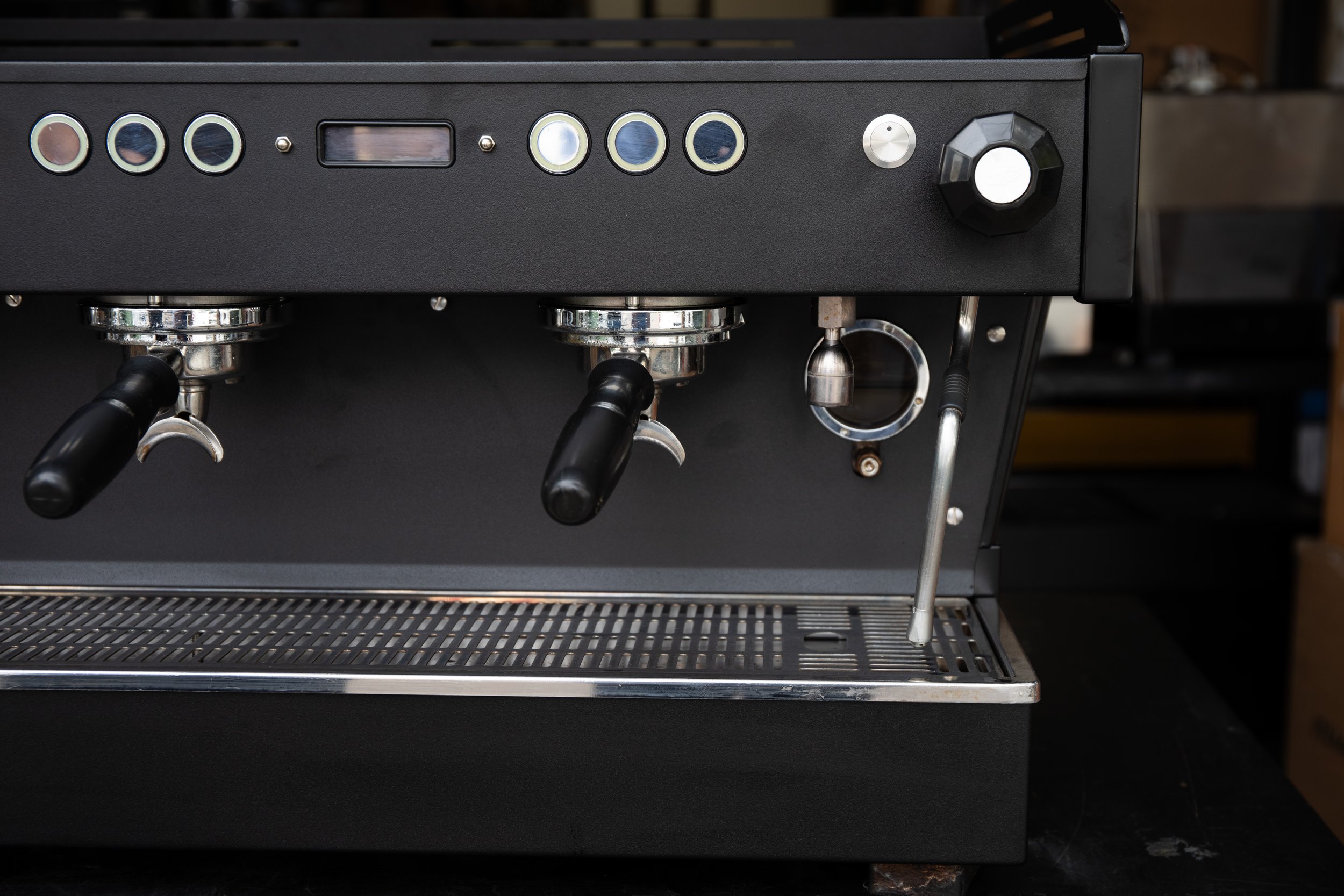A La Marzocco Linea PB Refurb Story
Each machine that comes into our workshop to be refurbished undergoes a thorough clean and rebuild of all of its internal components. The refurb process gives equipment a new lease on life as the machines maintain their original frame and panels (sometimes with a little paint job), but on the inside they are rebuilt to be as perfectly functional as any machine leaving the La Marzocco factory today.
The refurb process usually takes around 3 weeks to complete, including the turnaround time for powder coated panels. In under a month, a machine can go from being destined for the scrapyard to being sent back out into the world for another lifetime. We hung out with Victorian workshop technician Georgia to document the work that goes into completing a workshop refurbishment. This particular machine is a 2018 La Marzocco Linea PB that had received some previous customisation.
To begin the refurb process, Georgia does an overall inspection including an insulation and resistance test and visual inspection. Some electrical components in this PB didn’t pass the initial insulation and resistance test, meaning the coils would need to be replaced later.
Next up, all of the panels are removed, a protective covering is applied to the board and the machine is ready for its pressure wash. At Brewtech, we believe pressure washing is the most efficient way to give the machine the best clean possible. After pressure washing, the machine is left in the sun to dry off and then given a secondary dry with pressurised air back inside the workshop. Next, the machine undergoes another round of insulation and resistance testing. This is done to identify faulty components and ensure that we’re replacing them so they don’t fail in the field.
During the secondary insulation and resistance test Georgia found a faulty solenoid that was leaking to earth. A new solenoid was fitted and the rest were tested and replaced. further resistance testing revealed no further faults so she was able to move on to an earthing test. machines are not turned on until they pass their insulation resistance and earthing tests.
Next Georgia began to prepare the machine’s brew boiler element for the descale process. She insulation tested the element, checked for scale coming out of unusual places (which would result in an element replacement) and replaced the heat shrink. She re-terminated the element and returned it to the brew boiler so that it could be descaled along with the brew boiler. Chemical is left in the boiler where it will stay for at least 24 hours before being drained out. Then the brew boiler will be flushed several times with water to remove all chemicals.
While the descale is working its magic, Georgia gets on with rebuilding the machine’s steam taps and descale is applied to clean affected components. The copper components including the vacuum breaker are then polished with a soft wire brush and steel wool. The thermal probe has its thread tape and washer removed and a new washer was applied. The panels were then wrapped up ready to be sent to the powdercoater.
Once the panels return from the powdercoater, Georgia is ready to begin reassembly. All of the keypads are cleaned up and the lights are prepared to be readded to the front panel. The panels are all fitted and Georgia is ready to begin bench testing the machine. The bench testing process follows the brewtech workshop protocols, and a SCACE is used to test the pressure is accurate and consistent. Next up, the placement of the freshly powder coated white badge is determined. The glue is applied and the badge fitted.
And that’s it! This beautiful La Marzocco Linea PB is now ready to head back out into the world! Inside and out, it is completely unrecognisable from the machine that landed on our doorstep only a few weeks prior. Georgia describes the feeling of completing a refurbishment as one of fulfilment, peace of mind and pride. Thanks to Georgia, this machine has now found its forever home and is producing perfect espresso and will be for many years to come!

